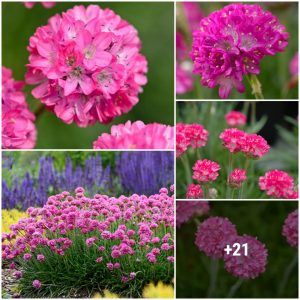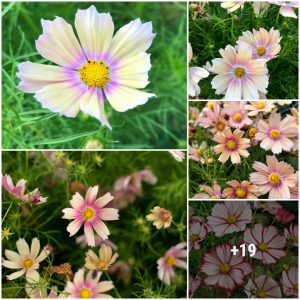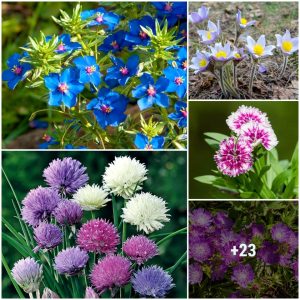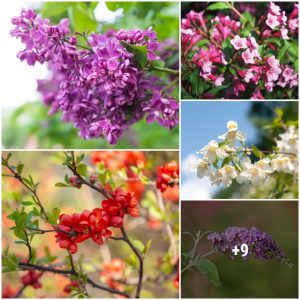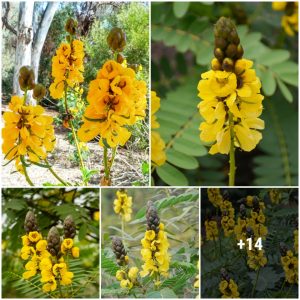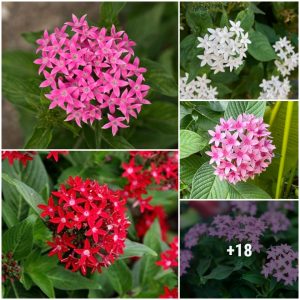
If you enjoy gardening, you should certainly know how you can protect yourself when doing so.
Now that the weather is nice outdoors, you probably can’t wait to dig your hands into the soil, but wait!
There are some precautions you should take while gardening this year. One of the things you should be aware of are the types of plants you should avoid planting.
There is the concern about garden bullies, divas taking over, plant toxicity and cultivars.
Beautiful, BUT Deadly
Although many are nice to look at, they can be deadly with harmful toxic compounds. Although you don’t hear too many cases of people dying from plant poison, it is a good idea to keep them away from your pets and kids.
We have compiled a list of 15 plants that you might want to mark off of your list, if they have been listed to plant this year.
There are plenty of other plants that you can choose from, which will prove to be a lot safer than the ones listed below.
1. Poet’s Narcissus (Narcissus poeticus)

The poet’s narcissus is part of the daffodil family, therefore, you can expect it to be light and delicate. It has pure white petals, embodied by a center of yellow with a rim of red. Every inch of the poet’s narcissus is toxic, yes, every part. If you’re thinking surely not the bulbs, think again. Don’t be fooled by its appearance, every part is toxic! It contains lycorine, a toxic crystalline alkaloid, which causes vomiting, stomach cramps, convulsions and even cardiac arrhythmias. Since its smell is so poignent, it can be overwhelming causing nausea and headaches.
2. Autumn Crocus (Colchicum autumnale)

This is a plant that is planted during the autumn season. It blooms in hues of pink, white, blue and purple. Although strikingly beautiful in appearance, the autumn crocus contains alkaloid colchicines. You might be thinking, wait, I’ve used this for medical purposes; you’re right. Alkaloid colchicines has been used to treat atrial fibrillation, gout and pericarditis. However, if eaten, absorbed through your eyes or inhaled, it can be very toxic. Its symptoms are similar to those experienced by someone who has arsenic poison in their system. The results of this poison become apparent within two to 24 hours of exposure. You might experience vomiting, fever, abdominal pain, diarrhea and in some instances, organ failure if left untreated.
3. Foxglove (Digitalis purpurea)

Foxgloves are characterized by tall spikes with multiple bell-shaped pink and purple flowers with interesting black and white spots inside their cup. Even though they are interesting to look at and would surely look appealing in any garden, parts of this plant contain cardiac glycoside, a digitoxin which affects the heart. it is most dangerous right before the seeds ripen. If someone were to eat it, it would cause low pulse rate, vomiting, nausea and heart contractions that could ultimately cause them to go into cardiac arrest.
4. Lily of the Valley (Convallaria majalis)

This flower has a sweet smelling scent and has leafy shoots with a cluster of downward-facing white flowers. It is a delicate flower by appearance but is very toxic and grows rather aggressively. It has been found to have up to 38 different cardiac glycosides. If someone were to take in just a small amount, it could cause a reduced heart rate, abdominal pain, blurred vision and skin rash. Lily of the Valley also produces small red berries, that of which are also poisonous. If you have small children around, you must pay close attention that they do not put them in their mouths as they are especially appealing to small children.
Aggressive Growers
So when we talk about the bullies of the garden, this would be those plants that grow aggressively. They crowd out the less aggressive growers. The reason we have these on our list is because it will be a chore keeping them under control. If you decide to plant them, be prepared to perform a great deal of maintenance to keep them under control.
5. English Ivy (Hedera helix)

This plant grows so aggressively and is so invasive that it has actually been banned in the state of Oregon. Even though the vines of the English Ivy create a beautiful ground cover and add lovely interest to a building, using it in any other capacity can pose a great deal of problems. Once it has been planted, it is very difficult to control because it spreads so densely that it can choke out other plants and create an ‘ivy desert’ effect. Its tendency to grow upward can cause young trees to fall over because of their weight.
6. Mint (Mentha spp.)

Many of the mints that we have come to love, such as, spearmint, peppermint and catmint, are quit prolific growers. Because of their underground rhizomes and horizontal runners they are able to grow far and wide. They can quickly dominate a new area of your garden. This is why it is best to grow them in a container and to harvest their leaves frequently to keep them contained. If you still decide to grow them outdoors in your garden, make sure you put down mulch in order to keep them from growing all over the place.
7. Bamboo (Bambusoideae)

Bamboo definitely adds an exotic element to any landscape. It is the fastest growing wood in the world. It is often used as building material due to its strength and durability. Bamboo is also hard to contain, regardless of your fences or gates. It is rough and tumble and can grow despite its seemingly effective, restraints. It is known to spread and is considered an invasive exotic plant that crowds out native plants. This means it can be a threat to biodiversity. It can be very difficult to cull and could take years to get it under control.
8. Creeping Jenny (Lysimachia nummularia)

With a common name like ‘creeping jenny’, it would be safe to assume that this plant likes to move! The rounded leaves along expansive, reaching stems make for an attractive ground cover and flower basket accent. Native to Europe, it is considered an invasive species in the US because of its propensity for crowding out native plants. Though it is easily pulled from the ground, Creeping Jenny is better suited for containers or as a lawn replacement.
Garden Divas
Like any diva, the garden diva demands to be seen. They crave and command attention and care. These plants are high-maintenance and will not respond well if their demands are not met. Instead of dealing with the maintenance issues that exist with these types of plants, it might be best to simply let them be and plant some that are low maintenance.
9. Roses (Rosa spp.)

While many people love to receive this beautiful, fragrant flower, they are very challenging to grow. Most types of rose shrubs are demanding and need lots of care and attention. If you want to ensure they bloom properly, you will have to make sure that the soil is deep enough, loose and has enriched compost. You have to properly plan and space plants so that the roses are able to receive the right amount of air flow. You’ll have to water them several times a week. They require regular pruning and deadheading. They also have to be protected from black spots and from aphids, deer and spider mites.
10. Gardenias (Gardenia jasminoides)

If you can’t deal with a temperamental person, you definitely will not be able to handle a temperamental plant like Gardenias. This flower needs a lot of water, sunlight and humidity along with constant feeding, mulching and pruning so that they will be here in time for summer. If you are not able to care for all of the needs of the gardenia, you might as well hang it up. It’s not worth the time and effort because if you neglect only one or two things, all of them will fair poorly.
11. Dahlias (Dahlias spp.)

This flower comes in various sizes and are used for a variety of things. The dahlias is prone to powdery mildew, botrytis blight, viral diseases and tuber rot. You’ll need to be persistent in combatting aphids and thrips. This requires that pesticides are applied every week to avoid infestations. If you experience prolonged blooming, it could mean lots of deadheading. As they continue to grow, they will need to be supported by stakes in order to prevent the stems from snapping.
12. Rhododendron (Rhododendron ponticum)

This is a a plant of pink, white, purple and flower clusters, usually budding around spring time. The leaves are thick enough to last into the winter. The whole plant is toxic. If you swallow any part of the Rhododendron plant you might begin vomiting, drool, get watery eyes, slow pulse and low blood pressure. In some instances, you might fall into a coma and death could follow.
13. Hydrangea (Hydrangea macrophylla)

This is a lovely large white, pink blue cluster of flowers that love shade. They are great to add to any landscaping scene that blooms at the beginning of the summer. This entire plant is poisonous, especially the flower buds. The poison in the hydrangea is the hydragin, a cyanogenic glycoside. It can cause dizziness, shortness of breath, rapid pulse and fainting. Some people have even experienced a drop in blood pressure and convulsions.
14. Larkspur (Delphinium consolida)

This low-maintenance buttercup flower would be a welcome addition to any garden, with its colorful petals, ranging from white to blueish purple. However, the downside to this plant is that it contains high levels of toxic alkaloids. They are nice to look at but if digested, they could be deadly. Symptoms of poisoning is vomiting, slow heartbeat, nausea and a burning mouth. If you ingest the larkspur, make sure you seek medical attention within six hours of doing so because it can be deadly if you do not.
